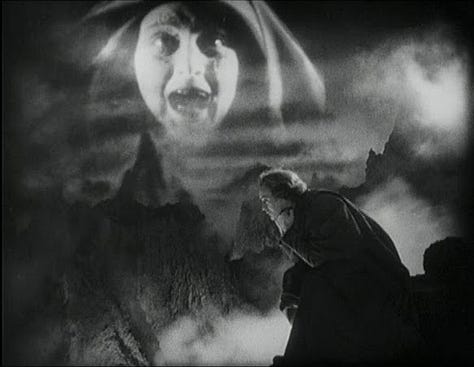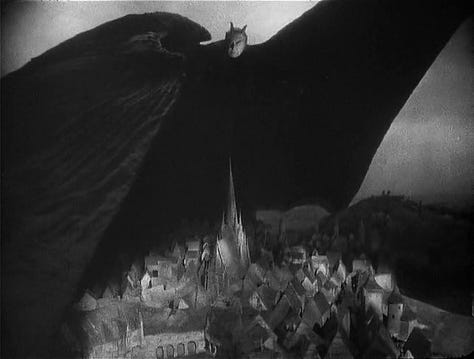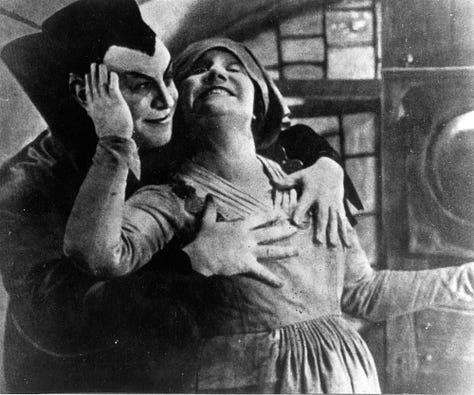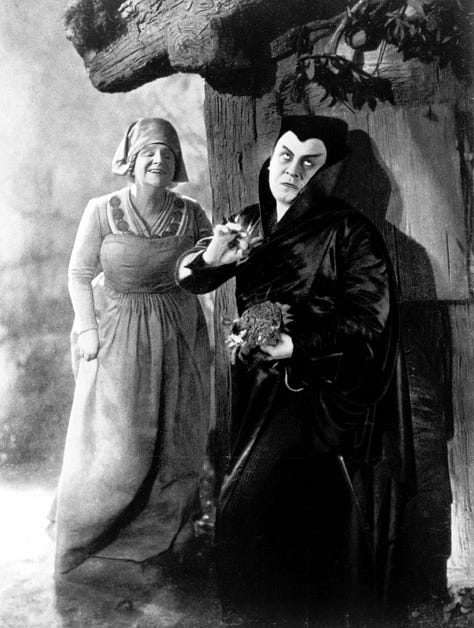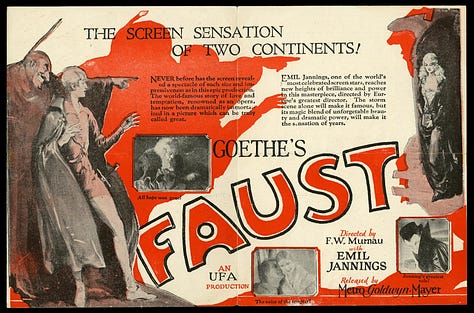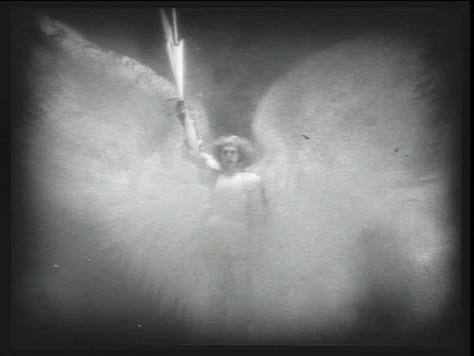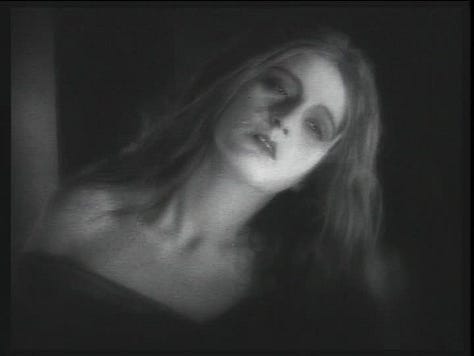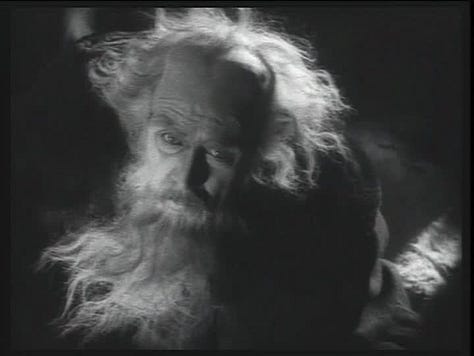FAUST
1926 • F. W. MurnauScreenplay: Hans Kyser
Producer: Erich Pommer
Cast: Gösta Ekman, Emil Jannings, Camilla Horn, Wilhelm Dieterle, Frida Richard, Yvette Guilbert
Cinematography: Carl Hoffmann
Music: Werner Richard Heymann, William AxtMetro-Goldwyn-Mayer (USA)
Earth and sky shall surely quake, when the dead themselves awake, answers to the Lord to take. When the court is held in sway, hiding shall no longer pay, all must out on Judgement Day!
A beautifully shot lyrical film of Johann Wolfgang von Goethe's play. Mephisto and Archangel are in an epic battle for the fate of the Earth and they wager the outcome on the soul of Faust, a learned alchemist. Faust, at first, just wants to help his people as a pestilence sweeps his city but Satan soon tempts him with youth, love, and power. Faust gives in to his basic desires, and the Devil closes in on victory. Can Mephisto fully corrupt Faust? Or will Faust find redemption, and in turn, salvation? It presents a tale of love, loss, and the eternal struggle between good and evil.
In the pantheon of German Expressionism, alongside the haunting classic Nosferatu (1922), stands another classic that has been overshadowed by its more famous counterpart. F.W. Murnau, renowned for his chilling adaptation of Bram Stoker's Dracula, left an indelible mark on the world of cinema with his equally remarkable work, Faust.
While Nosferatu is Murnau's most celebrated work in the horror genre, Faust offers a different but equally compelling experience. It is far more extravagant than Murnau's vampire tale, and it showcases his technical brilliance much more effectively. The film's imagery is nothing short of breathtaking, starting with the unforgettable moment when Mephisto spreads his gigantic black wings over Faust's small town. This iconic image alone is a testament to the film's visual grandeur and remains etched in the memory of those fortunate enough to witness it.
Faust is a testament to the technical brilliance of the UFA technicians and the artistry of German Expressionism. This cinematic movement was renowned for its use of stark contrasts, distorted sets, and nightmarish visuals to convey the characters' inner turmoil and the overall sense of unease. Faust takes these elements to new heights, pushing the boundaries of what was thought possible in filmmaking during its time.
One of the most striking aspects of the film is its unparalleled set design. The film transports viewers to a world that blurs the line between reality and fantasy, where the physical surroundings mirrors the psychological landscapes of the characters. The sets, characterized by their grotesque and otherworldly appearance, draw viewers into the story's dark and foreboding atmosphere. These surreal environments become characters in their own right, playing a crucial role in shaping the narrative and the characters' fates.
The film is filled with beautiful imagery seldom seen in films of the era. A heavily special-effects-laden film, the film showcases groundbreaking techniques that were far ahead of their time. Throughout the narrative we see the horsemen of the apocalypse, burning letters etched into the soul contract, and ominous hooded figures. The special effects work in Faust that truly sets it apart as a masterpiece of its era. It's a feast for the eyes and is essential viewing for its shot compositions alone. The atmosphere Murnau creates is haunting. From the mesmerizing transformations of the characters to the epic battle scenes between good and evil, the special effects in Faust remain astonishing even by today's standards. The film's ability to immerse audiences in a world where the supernatural seems tangible is a testament to Murnau's visionary direction and the ingenuity of the film's technical team.
Very few inter-titles are used, with the story relying heavily on its visuals. At the time, it was the most expensive German film ever produced, only to be surpassed by Metropolis a year later. Fittingly, both films are credited with seriously contributing to the early visual effects industry. The film is also said to have inspired the "Night on Bald Mountain" sequence from 1940's Fantasia.
The film introduces us to Mephisto, portrayed with sinister charm by Emil Jannings, who serves as the embodiment of evil. Jannings, usually a somewhat hammy actor, puts his over-the-top antics to good use here as the evil dark lord Mephisto, imposing a malevolent presence throughout the film. Given Jannings’ later ties to the Nazi Party, I am reluctant to heap any more praise on the actor.
While the story may feel melodramatic to contemporary audiences, the film's astonishing sets and groundbreaking special effects make it a film that continues to captivate and inspire. For fans of early horror and lovers of visual storytelling, Faust offers a mesmerizing journey into the realms of love, loss, and the eternal battle between good and evil. This was the last major film Murnau produced in Germany before his debut in the United States with the Academy Award-winning Sunrise: A Song of Two Humans in 1927.
Behold! The Gates of Hell are opened and the horrors of the masses plague the earth...
Streaming: Kanopy, Classix
Digital Rental/Purchase: Apple TV, Amazon, Kino Now
Physical Media: Available on Blu-Ray and DVD
